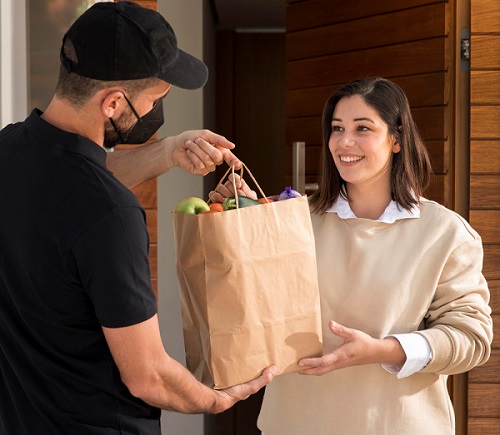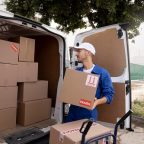Packaging is an essence to e-commerce, with a staggering majority of buying saying it could either have a positive impact or ruin an otherwise positive purchase experience. Package design can play a value-added service in a buyer’s journey while they shop online. For instance, take the unboxing experience, where there is quite a significant opportunity for e-retailers to boost the consumer experience by enhancing the way the package appears and performs. Some research saw that 38% had no product brand on the secondary packing, internal or external, and 30% did not showcase the value of the brand. When making package design for e-commerce, food and beverage makers must consider the given consumer demands as suggested by Mr Gaurav Jalan, Founder, and Director of Packman Packaging Pvt Ltd India’s top packaging manufacturer and supplier for e-commerce and food and beverage brands.
How do food and beverage makers make efficient packaging?
· Convenience is the major driver of online grocery across markets as buyers want shopping that’s quicker and simpler than ever before. Food and beverage makers can tap into this trend by giving convenient packaging, such as packaging that is simple to open, robust and lightweight, and could be safely delivered without the requirement for excess secondary packaging. By the year 2025, space-efficient and ‘frustration-free’ packaging are estimated to become a basic need for consumers.
· Demand for sustainable packaging is on the rise worldwide, so wherever possible, food and beverage makers must avoid unnecessary secondary packaging and make certain it is recyclable. Plastic packaging is under immense pressure with high-profile initiatives underway to decrease its effect on the environment, particularly the oceans, and so as public concern grows, food and beverage makers must look to plastic alternatives.
· Lightweight, logistically suitable packaging, like cartons, has a key role to play in online grocery, both in lowering shipping expenses and carbon footprint.
Ways more e-commerce food and beverage sales impact secondary packaging
Consumers shopping through e-grocery are quite critical of secondary packaging, which they mostly consider to be both unnecessary and ecologically unfriendly. According to one survey, 80% of buyers in South Korea – the most developed nation for e-commerce — and 74% in America say they would avoid goods with multiple layers of packaging for environmental reasons.
From an e-retailer point of view, secondary packaging, like the film wrap on product trays, lends considerable time and complexity, and certain e-commerce pure players report that eliminating such packaging before repacking for fulfillment accounts for around 10% of costs. As online grocery sales spikes, and the race to enhance efficiencies accelerates, food and beverage makers ought to have a closer look at their packaging and come up with potent but lightweight solutions that make value in a growing omnichannel marketplace.
Ways to blend design and technology to design a great product for the consumer
Personalization is critical to developing brand loyalty and customizing the shopping experience for consumers. With technology, brands are tapping into customer data gathered across digital touchpoints, be that whilst they order online, or with smart packaging features, to resolve complex and personal hurdles for consumers one-on-one. With innovative radio frequency identification (RFID) and unique code identifiers on packages, e-retailers have witnessed nearly 30% growth of a specific brand’s sales, letting them leverage their deep customer data to understand the most desirable, and profitable products. Data is even being utilized by food and beverage makers to form custom products in smaller batches. It is contributing to an ongoing transfer in the balance of power from brands to e-retailers, who has the biggest record of personal data and thus “own” the consumer relationship – while forming their own private label offering.
Ways smart packaging open avenues for marketing for buyers and what the future is
Digital printing is key to smart packaging technology, making opportunities for consumer interaction, which lets producers print a unique digital code on each package. These codes could then be scanned through smartphones or special devices, leading to innovative avenues:
· With a supply chain that is interlinked from end-to-end, brands could have traceability more transparent, sharing information with consumers straight to the farm or grove where a specific product originated.
· The package could be the entrance to a customer engagement program: a surprise ticket, a unique identifier for an online contest, a loyalty token, or a mode of making a one-to-one channel with individual buyers.
· The information flow could be two-way, letting producers capture certain, valuable information regarding their consumers as a process of the digital code interaction.




